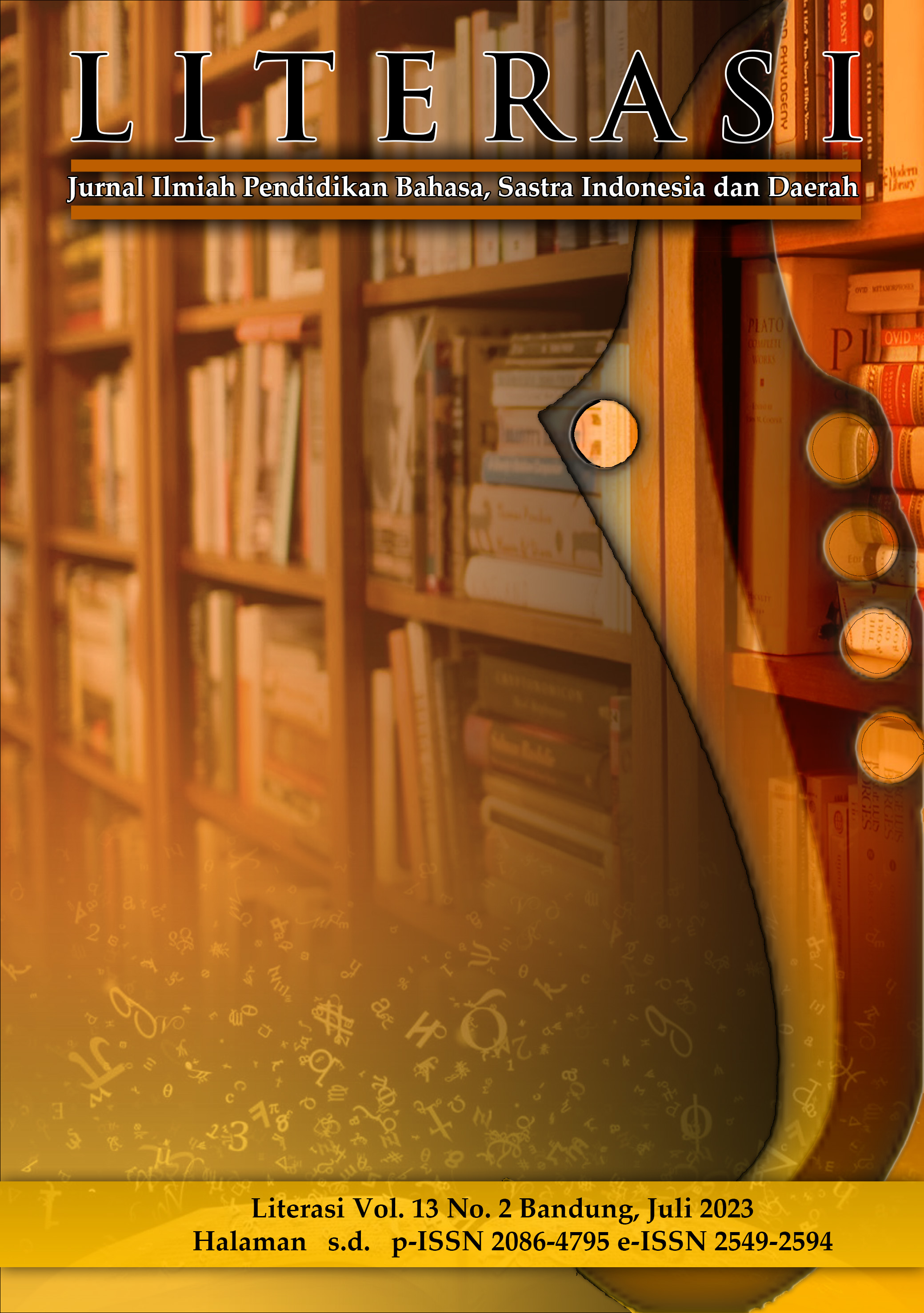Predikat Kompleks Bahasa Aceh: Kajian Teori X-Bar
DOI:
https://doi.org/10.23969/literasi.v13i2.6792Keywords:
Complex Predicate, Acehnese Language, X-Bar Theory.Abstract
This study aims to analyze complex predicates in Acehnese in the sentence structure used by speakers in everyday life. This study uses a qualitative approach with descriptive analysis method. The object of research is the predicate of the Acehnese language complex. The data sources for this research are three native Acehnese speakers. Data collection by observation and interview methods. Analysis was carried out during collection, reduction, presentation, and drawing conclusions/verification. Data analysis uses distributional and substitutional methods. The results of the study show that the characteristics of complex predicates in the Acehnese language are as follows. (1) Complex predicates are formed from two or three verbs, (2) complex predicates are located side by side, (3) complex predicates form one event (single predicate), and (4) have the same aspect or negation. There are four patterns for forming complex predicates in Acehnese, namely: (1) intransitive V1 + intransitive V2, (2) transitive V1 + intransitive V2, (3) intransitive V1 + transitive V2, (4) transitive V1 + transitive V2, and (5) intransitive V1 + intransitive V2 + transitive V3
Downloads
References
Predicates Cross-linguistic Perspectives on Event Structure. New York: Cambridge University Press
Chaer, A. (2003). Linguistik Umum. Jakarta: Rineka Cipta.
Godard & Samvelian. (2021). Complex predicates. In Stefan Müller, Anne Abeillé, Robert D. Borsley & Jean- Pierre Koenig (eds.), HeadDriven Phrase Structure Grammar: The handbook, 419–488. Berlin: Language Science Press. DOI: 10.5281/zenodo.559983
Gu, B.K., dkk. (2015). Hangugo Munbob Chongron 1 (한국어 문법 총론 1). Seoul:
Mulyadi & Sembiring (2019). Predikat Kompleks Bahasa Karo: Kajian X-Bar. Lingua. Volume XV. Nomor 2. Juli 2019
Hutami & Mulyadi (2021). Predikat Kompleks Bahasa Banjar Dialek Hamparan Perak ( Teori X-Bar). Lingua. Volume XVII. Nomor 2. Juli 2021
Jipmoondang. Kim, J. S., dkk. (2005). Oegugineul Wihan Hangugeo Munbeop 1 (외국인을 위한 한국어문법 1). Seoul: Communication Books.
Krauße & Harvey (2A021). Complex predication and adverbial modification in Wagiman. AUSTRALIAN JOURNAL OF LINGUISTICS 2021, VOL. 41, NO. 1, 96–129 htt:/doi.org/10.1080/07268602.2021.1913401.
Kridalaksana, H. (2008). Kamus Linguistik (edisi keempat). Jakarta: PT Gramedia Pustaka Utama.
Latifah & Mulyadi (2020). Predikat Kompleks Dalam Bahasa Angkola Mandailing. Litera, Volume 19, Nomor 1, Maret 2020
Lyutikova & Tatevosov (2013). Complex predicates, eventivity, and causative-inchoative alternation. Lingua 135 (2013) 81—111
Mulyadi. 2010. Frase Preposisi Bahasa Indonesia: Analisis Teori X-Bar. Universitas Sumatera Utara, Vol.34
Rofiatul. (2015). Predikat Kompleks Dan Serialisasi Verba Bahasa Jawa (Studi Pelestarian Bahasa Daerah Melalui Kajian Tata Bahasa Leksikal Fungsional). Litera : Jurnal Bahasa dan Sastra Vol. 1 No. 1. Januari 2015
Subiyanto, A. (2010). Konstruksi Verba Beruntun dalam Nona Koelit Koetjing. Makalah disajikan pada Seminar Nasional Pemertahanan Bahasa Nasional. Universitas Diponegoro, Semarang.
Tarigan & Stevani (2021). Analyzing Complex Predicates in Karo Language using Syntactic Parsing. International Journal of Linguistics Studies (IJLS) DOI: 10.32996/ ijls
Downloads
Published
Issue
Section
License
Copyright (c) 2023 Literasi: Jurnal Ilmiah Pendidikan Bahasa, Sastra Indonesia dan Daerah

This work is licensed under a Creative Commons Attribution 4.0 International License.
Hak cipta artikel yang diterbitkan di jurnal ilmiah dimiliki oleh penerbit, bukan penulis. Hal ini berkaitan dengan koordinasi hak akses untuk cetak ulang atau penggunaan lainnya. Dalam hal ini penerbit mempunyai keluluasaan untuk mempublikasikan artikel sesuai dengan kesepakanan Transfer Agreement (penyerahan hak cipta) antara penerbit dengan penulis.















